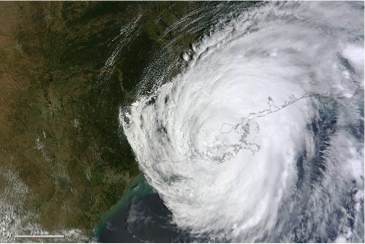Please note: Osher Rainforest will be closed for maintenance Jan. 14–16.
Science News
Earth Update - September
September 12, 2012
by Kathi Koontz

The Morrison Planetarium’s monthly Earth Update, a monthly “Science Tonight, Live@630” presentation at NightLife, takes visitors on an immersive trip around the world examining current events on our blue planet—including climate, weather, seismic activity and more. The tour is created and navigated by Tim Horn, our producer of climate and earth science visualization and presented by our expert planetarium presenter, Josh Roberts.
We like to follow up with an article here, with a summary of the latest earthly news that we discussed in the dome.
This month, Josh and Tim started at the Sun. On the last day of August, a coronal mass, a long filament of charged particles trapped in the Sun’s magnetosphere, was ejected into space at a speed of over 900 miles per second! Luckily it didn’t travel directly toward Earth. Similar coronal mass ejections can head toward us, however, which makes them well worth studying.
Leaving the Sun, Josh and Tim returned to our planet, with images courtesy of the NASA Earth Observatory. This year, the National Climatic Data Center reported the hottest July on record in the contiguous United States.
Check out this natural-color image of Hurricane Isaac over Louisiana on August 29 from NASA’s Terra satellite. Within several hours of this photo, the hurricane was downgraded to a tropical storm. Issac claimed five lives, but the storm also brought beneficial rains to parts of the drought-stricken Midwest.
Speaking of drought… In July, the US Drought Monitor announced that over 53% of the country suffered in moderate drought or worse.
The remnants of Isaac eased the dryness dramatically in Arkansas, Missouri, Illinois, and Louisiana, while rains also moistened states in the mid-Atlantic and Southeast.
But to the west, 100-degree-plus temperatures and a continued lack of precipitation pushed Oklahoma, Texas, Nebraska, Kansas and the Dakotas deeper into drought. Wyoming and Montana also got drier.
Looking at the western United States, we viewed another natural-color image showing several wildfires. That image, from the Aqua satellite, was taken on August 12.
But it’s not all doom and gloom. The recent earthquake in Costa Rica caused “remarkably little” damage. If you’ve visited the Academy’s new Earthquake exhibit and seen our planetarium show, you know that preparedness plays a key role in people’s and communities’ abilities to cope with an earthquake. And societies prepare for earthquakes by building resilient infrastructure. Strict building codes, similar to those of California and Japan, helped Costa Rica stay intact, despite the 7.6 magnitude quake. The Boy Scouts were right, “Be Prepared.”
Join us next month for more Earth Update!
Kathi Koontz is production coordinator for the Worldviews Network here at the Academy. She works with planetariums across the country to display immersive science visualizations on local environmental topics. They partner with local non-profits and NGOs to share what they are doing and inspire action.